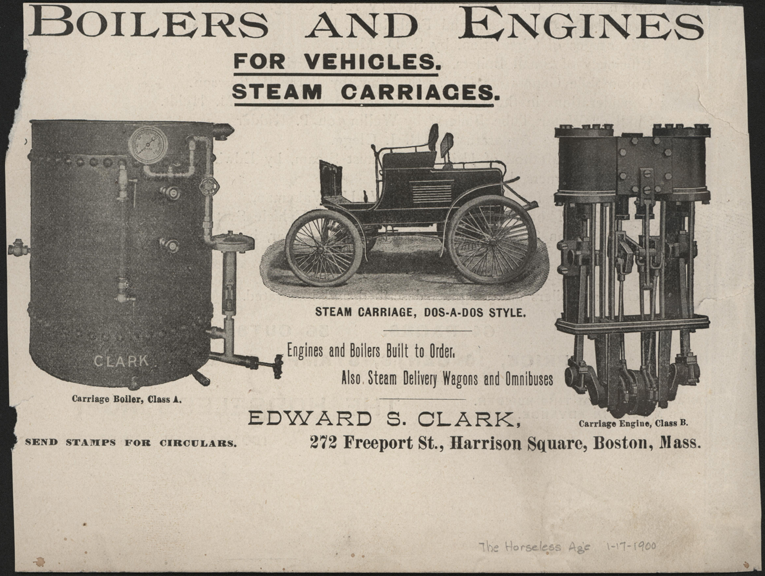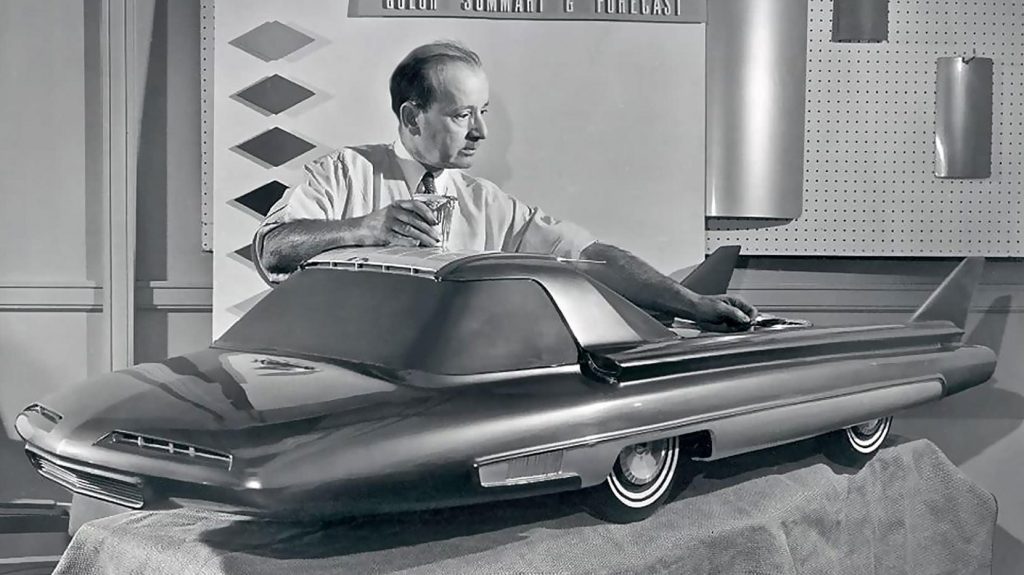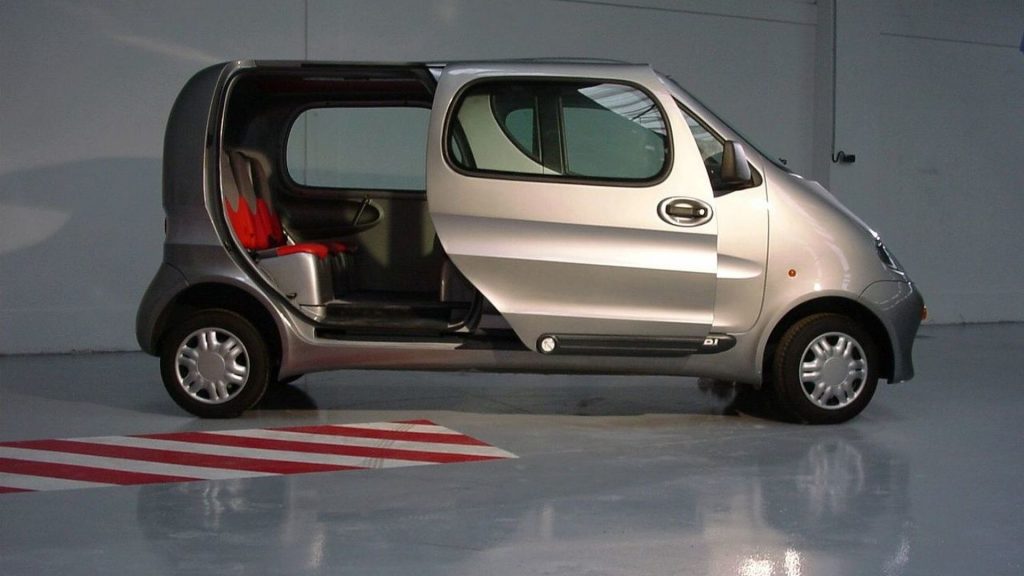Alternative power is a hot topic. As we look to a greener motoring future, batteries, hybrids, fuel-cells and bio-fuels are competing to drive our cars into the next decade and beyond – like it or not.
Peering back in time shows how there have been many other interesting attempts to provide less polluting propulsion for the people, including steam power, a nuclear car, nitrogen and gas turbines. However, let’s just say you won’t see any of them on the roads any time soon. Perhaps…

Like clockwork
Long before Karl Benz got the world motoring, the original Renaissance Man, Leonardo da Vinci, designed a clockwork-powered three-wheeler in 1478. Unfortunately, like several of his inventions, he never managed to build it. But more than 500 years later a team of designers, engineers and carpenters, commissioned by Florence’s Institute and Museum of the History of Science, constructed a one-third scale wooden version. And it worked! Just like a clockwork toy car the car’s springs were wound up by rotating the wheels backwards. And when released the ‘car’ would be propelled forwards. A full-scale car was even built, but according to Project Director Paolo Galluzi, like some TVRs, it was too dangerous to test drive.
Full steam ahead

The early days of motoring were a golden age for steam. US manufacturers Clark, Locomobile and, most notably, Stanley were making steam powered automobiles from the 1890s. Ok, so they still burnt fossil fuels, but in their day they were easier to live with than the first internal combustion-engined vehicles, with coal (and water) much more readily available than petrol. However, as fuelling infrastructure improved – and as the electric starter was introduced – steam power ran out of puff.
The mighty atom

In the ‘Atomic Age’ nuclear power was all the rage. It was the solution to all the world’s energy problems – including powering cars, apparently. In 1957 Ford designed the world’s first and only atomic powered concept car. It was called the Nucleon and it had a very small nuclear reactor in the boot, based on the ones used in atomic submarines. Heat from the reactor would power a steam turbine which would, in turn, drive the car. One set of uranium fuel rods was claimed to provide a range of 5,000 miles, at which point owners would simply swap the entire reactor for a new one at a service station. Funnily enough, it never went into production.
Jet set for failure
The post war years also saw a boom in jet travel. Gas turbines can run on a variety of fuels – including bio-fuels – and produce heaps of power, so at least two car manufacturers thought sticking a jet in a car was worth a shot.
Rover was first with its JET1 in 1950, and in 1952 it set the world’s first land speed record for gas turbine powered cars on a straight section of autoroute in Belgium, reaching a speed of 105 mph. The company would continue to experiment with jet propulsion for the next decade with its final jet venture being the Rover-BRM Le Mans car, which ran at Le Mans from 1963 to ’65. By then the performance had been boosted, with the car topping 140mph on the Mulsanne Straight. Graham Hill described the experience of driving the Rover-BRM: “You’re sitting in this thing that you might call a motor car and the next minute it sounds as if you’ve got a (Boeing) 707 just behind you, about to suck you up and devour you like an enormous monster.”
Meanwhile, across the pond in 1964 Chrysler built 50 gas turbine-powered cars for testing by selected American drivers. The Chrysler Turbine Car did a respectable 15 miles to the gallon and, by all accounts, the drivers loved it. But just like the Rover JET 1 the exhaust temperature was scorchingly high, reaching 260 degrees centigrade, making the car a danger to anything venturing near its exhaust and therefore somewhat unsuited to public road use.
Nitrogen, not
In the 1960s British Inventor Peter Dearman came up with the idea of powering an engine using nitrogen – the most abundant gas in our air. The gas would be compressed and stored in liquid form, but when released would expand to drive a piston engine. Dearman did manage to get a car running, but the technology proved better suited for running refrigeration units. As his son Michael told Wired magazine: “My dad did run a car using a Dearman engine. Just because it works in principal doesn’t mean it’s the best use for a technology.”
Flywheel flop
Despite the failure of its Turbine Car, Chrysler didn’t give up on the gas turbine engine. And, perhaps inspired by the Rover-BRM racer, decided to up the technology ante and create a Le Mans entrant of its own in 1995 – driven by Britain’s Andy Wallace. The very complicated prototype Chrysler Patriot had 500 horsepower twin gas-turbines, which ran at up to 100,000 rpm, driving twin alternators powering a 750 horsepower electric motor. The turbines also powered an ultra-high speed composite flywheel that stored another load of energy in kinetic form, ready to be deployed when required for an additional boost. In theory the car was capable of more than 200 mph and boasted rapid acceleration. The design won a Discover Award for innovation but could never actually be made to work properly and Chrysler’s hopes of winning Le Mans went up in smoke.
Air power

The Motor Development International OneCAT Air Car was a car that, you guessed it, runs on, air – compressed air. The car’s inventor, French engineer Guy Negre, reckoned his lightweight fibreglass city runabout would travel up to 120 miles on a full tank. The car’s air tank could be re-pressurised in three to four hours using an onboard electric compressor – which you plugged into a domestic electricity supply – just like a battery-powered electric car. The compressed air drove a piston engine and transmission. Various attempts were made to get the car into production from Italy to India throughout the early 2000s, but now the OneCAT seems to have vanished. Into thin air.
Learn about more successful innovations in our Great Inventions series









